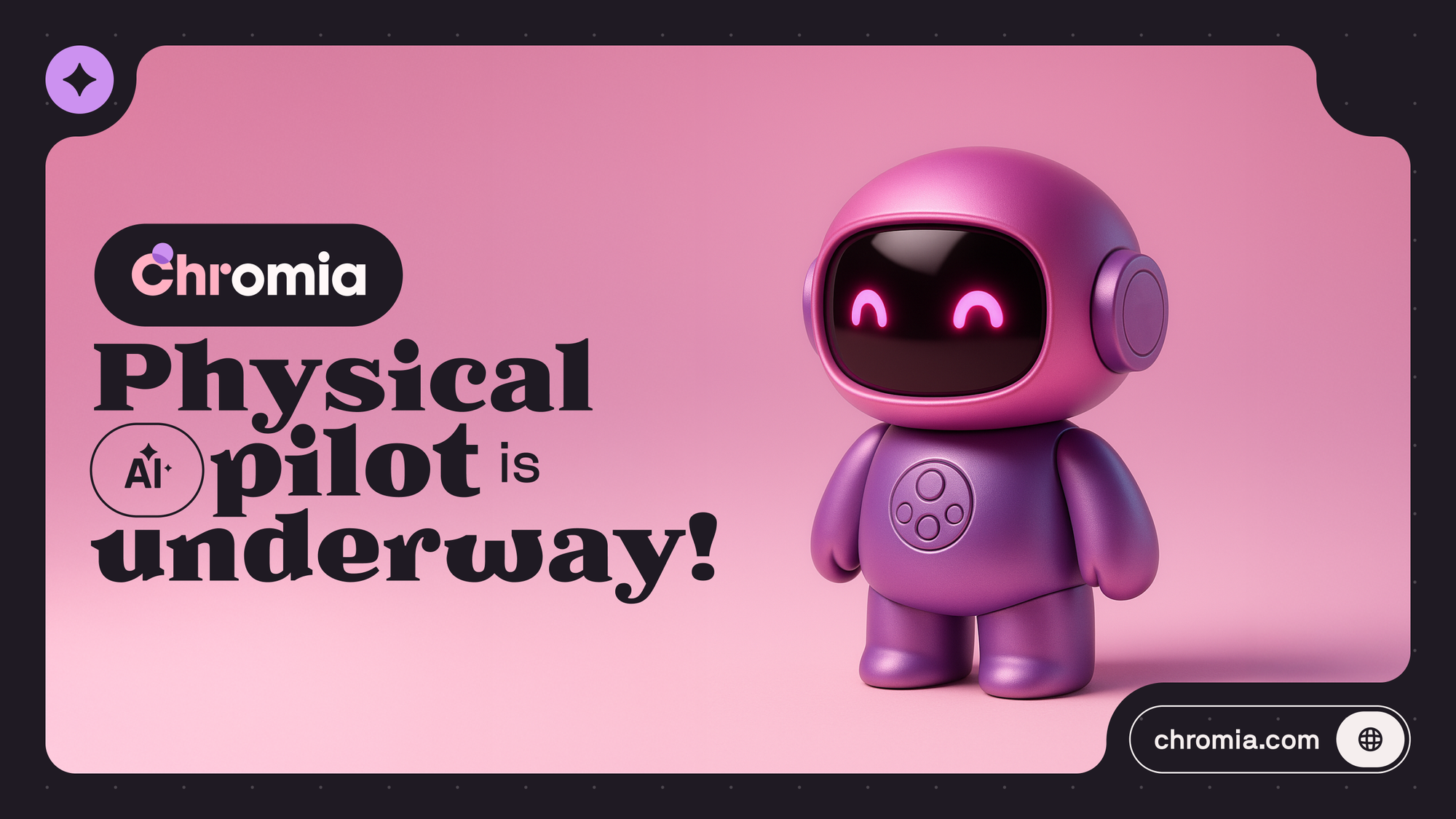From IoT sensors to embodied agents, the boundary between digital and physical systems is rapidly changing. At Chromia, we’re exploring what happens when blockchain becomes a memory store, coordination layer, and evaluation system for real-world, embodied intelligence.
From Concept to Companion - ChromBot
On Saturday July 12th, YJ and Johnson Lai visited Hangzhou for a stop on the Chromia China Tour, where they unveiled a small desktop robot companion called ChromBot. This marked our first public showcase of ongoing work in Physical AI, also known as Embodied AI. The event featured a live demonstration of the device, and a limited number of preconfigured units were distributed to select attendees.
You can see some promotional footage from the event in this X post shared by our partners at TinTinLand.
ChromBot may look like a cute, unassuming little robot, but it represents an early step in a larger initiative. It serves as a prototype of how Chromia can support real-time interaction logging, behavioral analytics, and cross-device learning in a way that is transparent, verifiable, and decentralized.
Interaction Logging On-Chain
The device is connected to a Chromia wallet, enabling future integration with Chromia blockchain as a verifiable layer.
With the help of Chromia’s Vector Extension, usage logs can be embedded and stored as vector representations on-chain. This turns interactions into searchable data, laying the groundwork for scoring systems and reward frameworks.
Not Just Robots
Physical AI isn’t just about robots. In fact, our very first experiment was a blockchain-based IoT weather oracle using a thermistor sensor and Arduino. The project showed how real-world data could be collected, timestamped, and stored immutably as a public good, accessible to anyone. Check out this step-by-step build guide from Johnson’s blog.
Sensors can be deployed in fixed environments, or be integrated into robots and other autonomous vehicles. These systems can function alone or in coordination with others. The scope is broad, as any agent with a physical presence can become part of a network.
What Can This Evolve Into?
The core ideas used for the companion robots mentioned at the beginning can be applied beyond a single device. In future iterations, Chromia could support data ingestion from a wide range of devices where the information can be indexed, searched, and compared.
This opens the door to use cases like:
- Behavioral mapping and performance comparisons
- Semantic similarity searches between devices
- Cross-device learning and knowledge sharing
As this work evolves, it can move beyond individual devices toward interconnected networks of physical systems. Chromia provides a decentralized and transparent foundation for evaluating, coordinating, and improving how these systems operate together.
More Coming Soon
The Physical AI Pilot is underway, and there is more to come. Follow our official channels and keep an eye on Johnson Lai’s X account for updates as the initiative progresses…
About Chromia
Chromia is a Layer-1 relational blockchain platform that uses a modular framework to empower users and developers with dedicated dapp chains, customizable fee structures, and enhanced digital assets. By fundamentally changing how information is structured on the blockchain, Chromia provides natively queryable data indexed in real-time, challenging the status quo to deliver innovations that will streamline the end-user experience and facilitate new Web3 business models.
Website | X | Telegram | Instagram | Youtube | Discord | Reddit | LinkedIn | Facebook |
